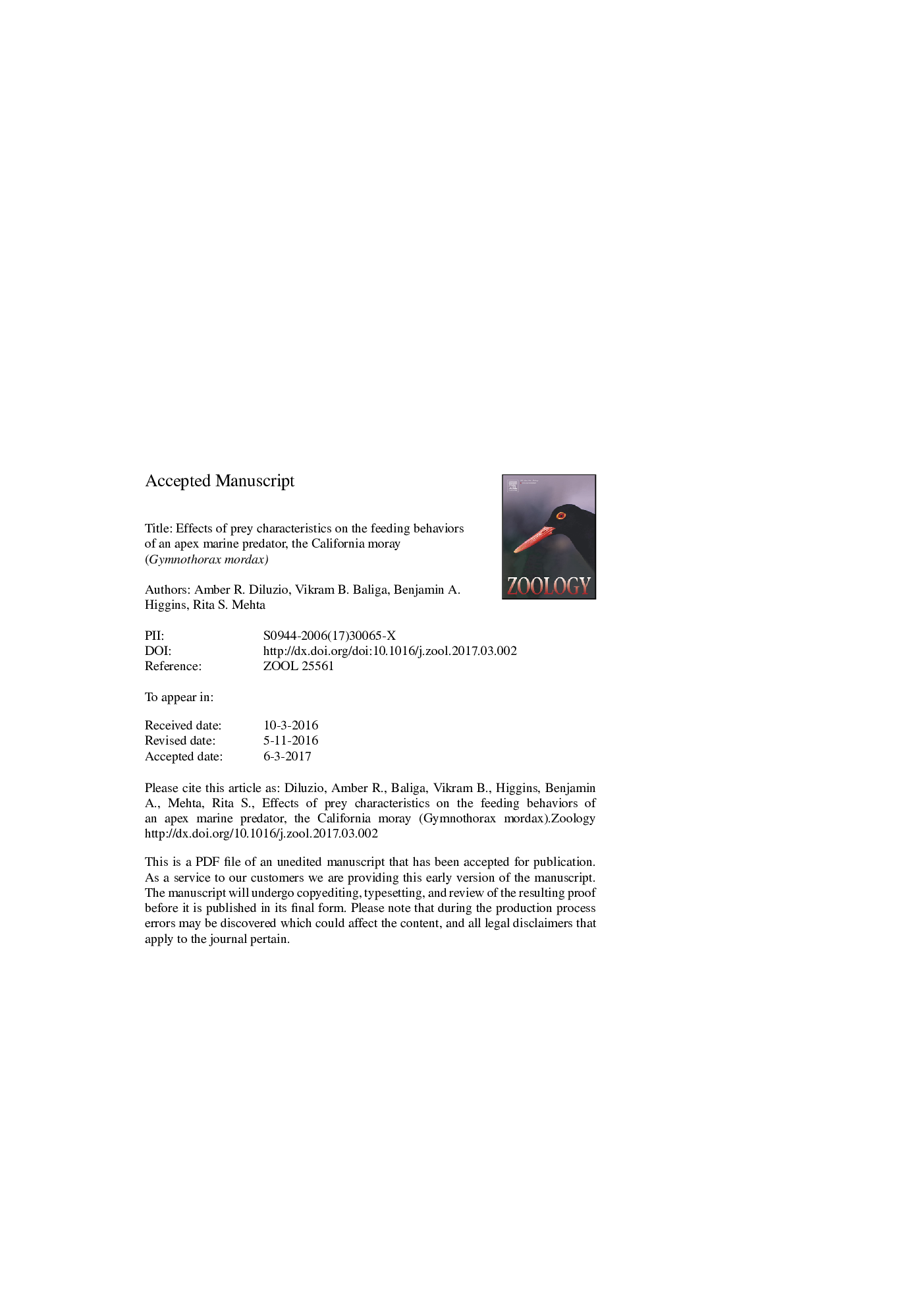| Article ID | Journal | Published Year | Pages | File Type |
|---|---|---|---|---|
| 5586548 | Zoology | 2017 | 36 Pages |
Abstract
Moray eels comprise a large radiation of elongate marine predators that are thought to swallow large prey whole but also circumvent gape constraints by manipulating prey into more manageable pieces. Prey manipulation behaviors include shaking, rotation, knotting, and ramming prey against another object to assist in swallowing. Most morays feed on a wide variety of prey that vary in mechanical properties such as stiffness and toughness, which could potentially affect feeding behaviors. There is little diet data informing us of the maximum prey size morays can swallow whole and whether maximum prey size differs between prey types. Our study examines feeding behaviors for the California moray (Gymnothorax mordax) in the laboratory. We recorded morays feeding on freshly thawed fish and cephalopods of varying size. We found that prey size had a strong effect on total feeding time and manipulation duration for both fish and cephalopods. While morays were observed using a diversity of prey manipulation behaviors and the durations for each of these behaviors increased with prey size, prey type had no effect on manipulation behaviors employed. Total manipulation duration, however, comprised a greater proportion of total feeding time for fish compared to cephalopods. As relative prey mass (RPM) increased for cephalopods, morays spent a greater proportion of their total feeding time transporting prey. Transport rate was higher for cephalopod prey but the relationship between RPM and transport rate was negative for both prey types. Despite this decrease in transport rate, we attribute the lower total feeding times for larger cephalopod prey compared to fish to behavioral tactics of morays. Morays used the corners of the aquaria to aid in the transport of larger cephalopod prey. We hypothesize that the deformable tissues of cephalopods and the presumably low coefficient of friction of their thawed mantles and tentacles may be difficult for the recurved teeth on the pharyngeal jaws to pierce and grip during transport.
Keywords
Related Topics
Life Sciences
Agricultural and Biological Sciences
Animal Science and Zoology
Authors
Amber R. Diluzio, Vikram B. Baliga, Benjamin A. Higgins, Rita S. Mehta,
